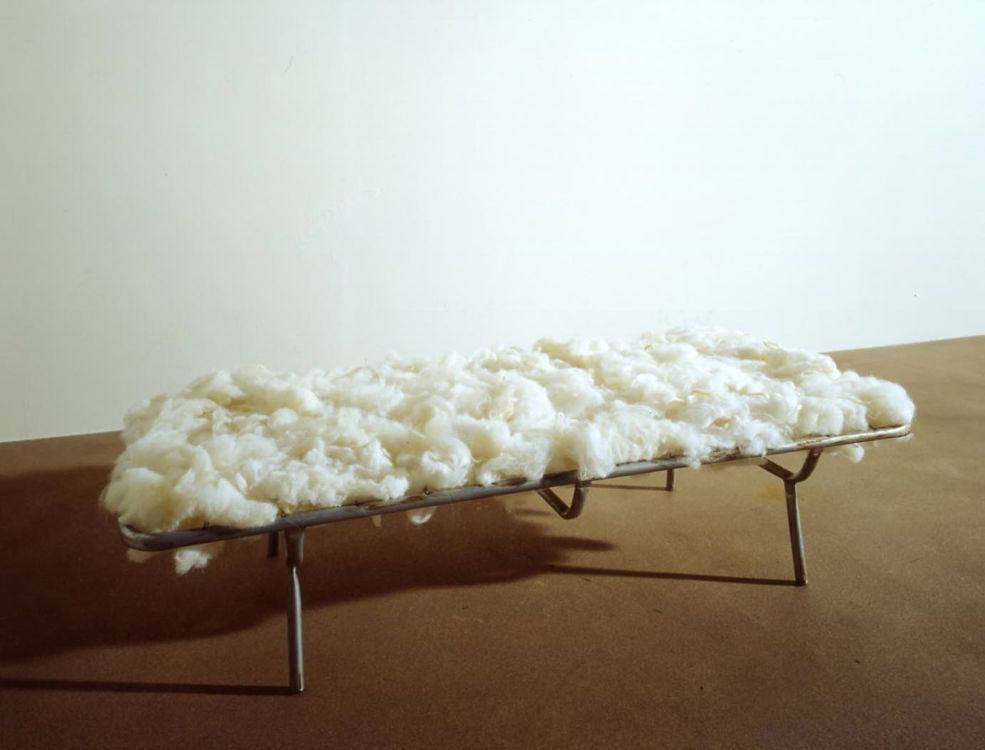Jannis Kounellis
Jannis Kounellis moved from his native Greece to Italy in 1956 and began exhibiting his work while still a student at the Accademia in Rome. Since the beginning of his career he has seen as urgent the need for a profound renewal of artistic language in keeping with the moment in history in which he works. According to Kounellis, contemporary society has lost its organizing principle, a measure capable of producing a cultural synthesis. Thus he considers the task of the artist to be the search for a new measure, passing through the fragmentation that defines the time in which he lives. The negation of a recognizable style was Kounellis’s first step. His work is structured in cycles, each one examining a particular typology. The language that Kounellis elaborates calls for the use of non-artistic materials—industrial materials and objects that pertain to everyday life, including living animals and sometimes people. Kounellis gives political value to his artistic engagement, and he often expresses it in terms of dissent. References to ancient culture or the history of art relate to the drama of a lost synthesis that the artist has set about to reconstitute. Kounellis is one of the leading figures in the Arte Povera movement.
The two works in the collection of the Castello, both untitled and dated 1969, were made during the period when the dialectical aspect inherent in the artist’s work was articulated through a tension between “structure” and “sensibility.” In these works, an inorganic element is usually combined with an organic one, in a dialectical juxtaposition. In the first work, a metal bed frame with legs supports a mass of natural cotton. Shown in its bare, essential state, the bed contains life, taking shape as an immediate measure of the human realm. In fact, the bed is the place that, more than any other, contains the stages of the human journey, from birth to death. Covered with raw wool, it is presented as a pallet that awaits occupation by a living being. The work was originally exhibited next to a second metal bed frame, which was covered by forty tiles bearing burning metaldehyde.
The other work consists of a structure, also made from a bed presented as a measure of the human being, resting against the wall. A central bar, which supports five small hanging scales that contain burning metaldehyde, cuts across the structure. Fire, without metaphorical references, is for Kounellis a primordial principle of transformation and he employs it as a raw material, including the tools needed for its production in the work itself.
[M.B.]


